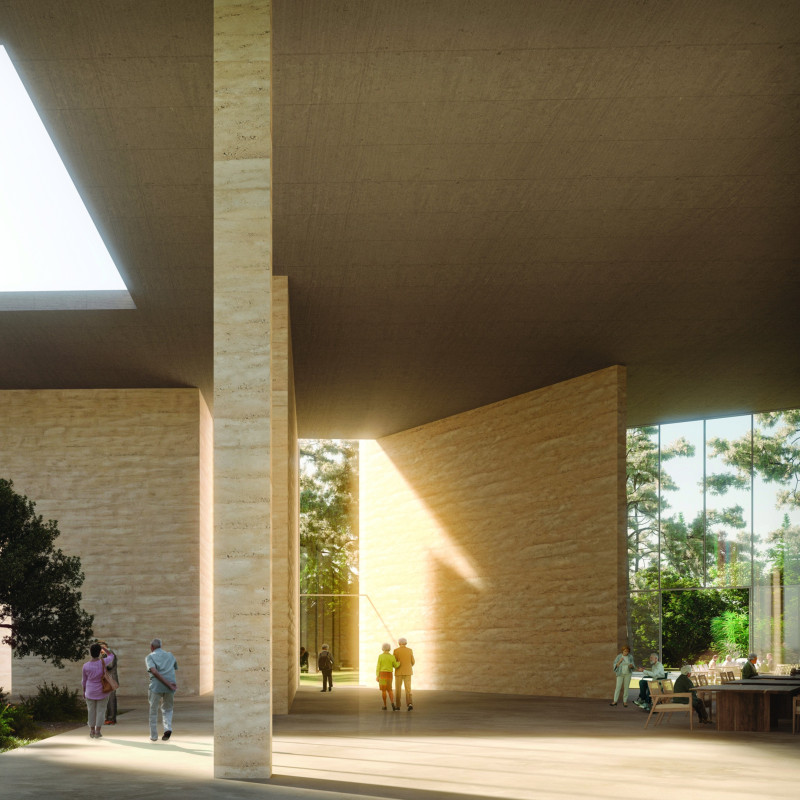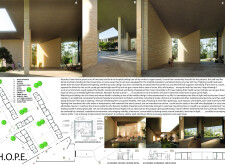5 key facts about this project
### Overview
Located within a healthcare context, the H.O.P.E. project aims to create an environment that supports individuals facing health challenges. Drawing on the architect's personal experiences in care facilities, the design seeks to establish a contrasting atmosphere to traditional hospital settings by emphasizing wellness and emotional comfort. The project's intention is to enhance the quality of life for patients, caregivers, and families through a well-considered integration of architecture and nature.
### Spatial Layout and Accessibility
The floor plan features a logical organization of spaces that prioritizes accessibility and functionality. Key components include:
- A welcoming main entrance designed to create a positive first impression.
- A serene chapel for reflection and spiritual respite.
- Kitchen and communal areas that encourage social interaction and foster healing through community engagement.
- A therapy area and pool that support physical wellness.
- Library and lounge spaces for relaxation, providing respite from medical environments.
- Private rooms designed with mobility in mind, ensuring comfort and dignity.
The inclusion of a strategically positioned courtyard facilitates a natural connection to the outdoors, which is essential for mental well-being.
### Material Selection and Environmental Considerations
The project employs a carefully chosen palette of materials to create a calming atmosphere and minimize environmental impact.
- **Wood** is the predominant material for wall surfaces and structural elements, imparting warmth and a connection to nature.
- **Glass** is utilized for floor-to-ceiling windows, which invite natural light indoors and blur the lines between interior and exterior environments.
- **Concrete** provides structural integrity while maintaining a minimalist aesthetic essential to the overall design.
- **Natural finishes** enhance tactile interactions and visual warmth, contributing to a comforting atmosphere.
Emphasizing sustainable practices, the project incorporates materials that reduce environmental impact while prioritizing user comfort and health.






















































